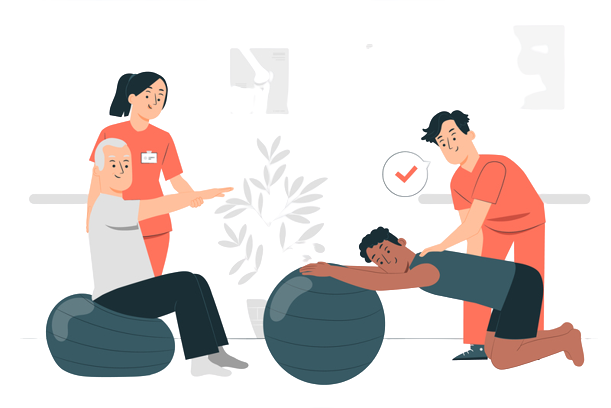October 24, 2022 by Prof. Dr. Burak Tatli
Physical Therapy and Rehabilitation Unit

Physical Therapy and Rehabilitation Unit
What symptoms are we working on? Hypoxic Ischemic Encephalopathy Engine Delay Balance Periventricular Leukomalacia Toe Walking Cerebral palsy Ataxi Sensory Problems hypotonia Hemiplegia/Hemiparasia tetraplegia dipparasia Motor Irregularities Poor Coordination spasticity Syndromes Brachial Plexus torticollis Scoliosis Prematurity Follow-up Neurodevelopment and Analysis
Neurodevelopment; The growth and development of the human brain is actually a miraculous and awe-inspiring event. Our brain exhibits a continuous dynamic change. “Brain flexibility” emphasizes that mental functions and situations are formed as a result of being affected by life. In today’s golden age of neuroscience, we learn how we learn, how the brain can change its own structure and chemistry to gather information and call it up when necessary, how it responds to emotionally charged stimuli, and how it adapts to an ever-changing world. The plasticity of the brain means that the brain is an organ that is tremendously responsive, capable of adapting, and changing forever. It adapts and changes through its responses to the demands and pressures of its environment. Neuroscience literally recreates the experiences of life, every month of the year, every week of the month, every day of the week and every minute of the day – with all our behaviors, reactions, intuitions, postures, attitudes – our brain – who we are and how we think. As a result, the concept of “Brain Flexibility” is based on the assumption that brain development will be affected by the intellectual, physical and spiritual experiences specific to each individual. Neurodevelopment is based on experiences and progresses in line with these experiences.
According to the findings of Torsten Wiesel and David Hubel, who study critical stages in the early development of the brains of Nobel laureates, in the early stages of development, you will need to create opportunities for your child to understand, see and see the world; otherwise, he may develop “visual learning” problems. With this example, we see how important it is for the child to experience life.
Your child is curious about an object he sees on the ground and goes on an exploratory journey to get information about it. He will need to experience many thoughts and movements in order to reach sufficient information about the object. At the end of this experiential time he reveals, he is experienced. This experience allows him to create neural network connections in his brain, which allows him to advance in terms of neurodevelopment.
Analysis; We express the cornerstones of the analysis as the definition of the strategy of thought-emotion-action and the determination of needs. During the analysis, the emotional state of the baby/child is determined with priority. Then its relationship with the environment, with the works and with the objects is evaluated. Strategies, speed and intensity of movement behaviors are determined according to the state of emotion and thought. During the analysis, video recording is taken and reports are made on video footage.
Babies and children with neurodevelopmental disorders should be supported in terms of brain development.
Treatment Session
A useful therapy model should benefit from the sciences, be nourished by the nature of existence and life, have experiences, be able to predict, see the whole and the smallest component, and be creative. Most importantly, he should be able to see the real need to be typical or to be more talented.
With this understanding of principle, treatments in our clinic are determined according to each child’s needs and their needs. Therapy is structured to create opportunities for the child in treatment. He does not want the child to progress inexperiencedly in the best known way, because this progress is blocked at a certain point. A single solution strategy will not be sufficient for the asymmetric and three-dimensional earth and human development, which is asymmetric and three-dimensional. Therefore, the therapist always thinks in the treatment so that the child can develop different solution strategies, think and experience. It finds it right to support the process, not the result, as in traditional approaches, so that the brain can reveal its own creativity again and again. What is desired in the supported process is the emergence of creativity. In therapy processes, parents are at the center of the process. Parents take part in guiding practices by the therapist in order to learn and apply the principles of the therapy approach. Every family with a child with special needs wants to see their child change and develop. These are the most important factors that motivate them to this challenging process. It is their most natural right for families to ask for the most beneficial therapy model for their children.
In our clinic, Bobath, MAES, Vojta, Sensory Integration and FloorTime treatment methods are applied.